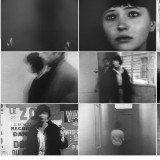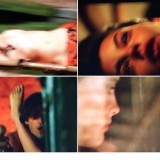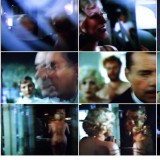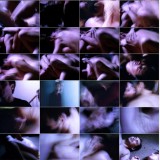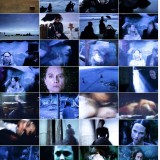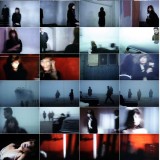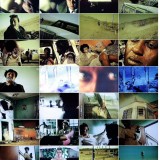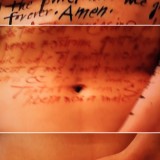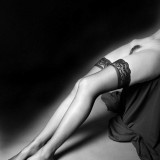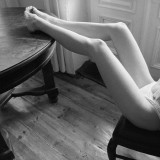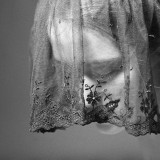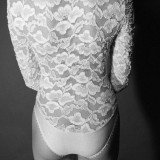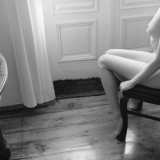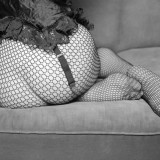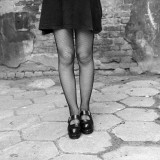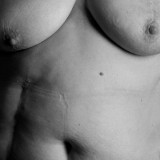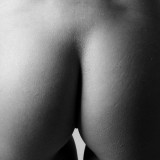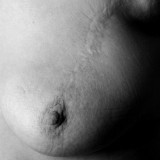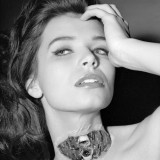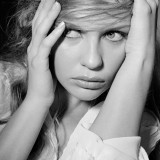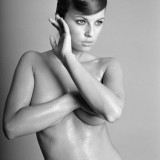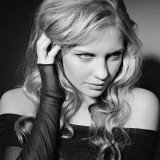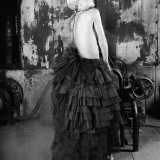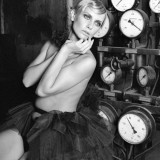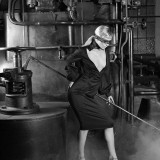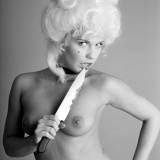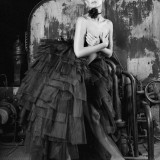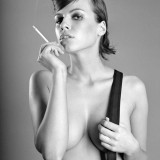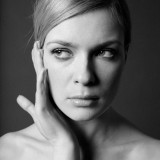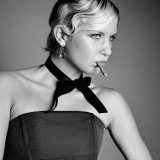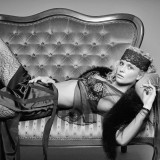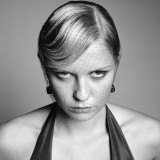Izabela £apińska
£apińska’s works may be described as a found photo footage. They are composed of sets of photographic film stills from well-known, cult movies. The artistic concept of these works has its source in both cubist collage and dada-surrealist montage (photomontage). Pointing out such a artistic genealogy places £apińska’s works at the sources of modernism. Let’s add that at the same time modernism is the source of avant-garde film, and therefore the source of cinema. We are talking here however about the works devised contemporarily. Works that were filtered through the experience of post-modernism, and more precisely late postmodernism and which grew up from an “adolescent age” in which they joked at art, ridiculed and juggled with conventions and created pastiches. We won’t find all of that in £apińska’s art. Hers is rather post-modernism which once it had turned around from a purely formal experiment, art for art’s sake, started to create narration, telling a story. In particular a personalised story, which is built according to one’s own scenario. And such are £apińska’s stories. Such is also her postmodernism, which is late, because it’s from the first decade of 21st century, but rooted in the ideas of the avant-garde of the 20th century.
£apińska according to contemporary artistic tendencies, fictionalises art and for this purpose she uses a film plot. It is for her the “material” out of which her own plot emerges. It is built as a narrative palimpsest – on the primary context she places her own content. The primary context is “found”, “discovered” by her and raised to the rank of an artwork using surrealist method. She chooses a film this way, so the entire film picture, as well as individual frames, start to function like independent images. The images somehow gain artistic autonomy. Not full autonomy of course, because we recognise for example actors’ roles, which point at the source movie. But in the set there are both still-frame images which are unrecognisable or difficult to identify and also those which are easy. Recognising is one of the game offered by the artworks. This layer opens them up to the public, allows others to participate in her art and enter into the intellectual game. Harder and more important from the point of view of the essence of £apińska’s artworks is the reading of her own narration. Film pictures have been privatised by her, colonised and inhabited by her own imagination.
The source of images for £apińska are the films by Bergman, Almodovar, Bertolucci and Polish directors such as Kie¶lowski or Kutz. £apińska has shown her works at all the editions of the Art & Documentation Festival which have taken place since 2009 in £ód¼. The aim of the festival is showing and highlighting the issue of the artistic autonomy of documentation in contemporary art. This is one of the leading issues of contemporary art. £apińska has undertaken this topic in her works in a very original way, using images – as if quotations from films.
The Film flaws of loneliness – is the title of a series of works devised by the above mentioned method. The title points towards the pessimistic feelings which accompany the artist via the world of film pictures (or more precisely – postfilm). Loneliness can be interpreted in many ways. It is often the content of movies and also of life. This is the moment in which art intermingles with life, joins it truly and becomes truth. The connection of art and life or even more – replacing art with life, ascribing it a liberating role in life practice, is a part of the avant-garde utopia. £apińska has found her own response to questions which the avant-garde asked from the very beginning.
One particularly exposed theme of her works is woman and womanhood. This is not unusual, as a woman is unceasingly the source of film pictures. Without the female beauty in all versions, shown in all ways, it is hard to imagine cinema, nay – it is hard to imagine art. At the same time for the artist womanhood is her personal experience. It is one of the dimensions of these works and the topic of her narration. It is rooted in film art, as well as in her own body and psychological condition and it is a great art narration, on the terrain of which meet artistic and life experiences.
£apińska’s professional life is connected with film. She is a graduate of the Film School in £ód¼ and she also graduated from cultural studies, specialising in film studies at the University in £od¼. She has written about the photographs of Jeanloup Sieff and Helmut Newton, about the movie entitled Cube by Vincenzo Natali, Despair by Rainer Fassbinder, Edi by Piotr Trzaskalski and the French Cancan by Jean Renoir. She is currently a deputy dean at the Department of the Organisation of Film Art in the £ód¼ Film School (2012 – 2016).
£ukasz Guzek


